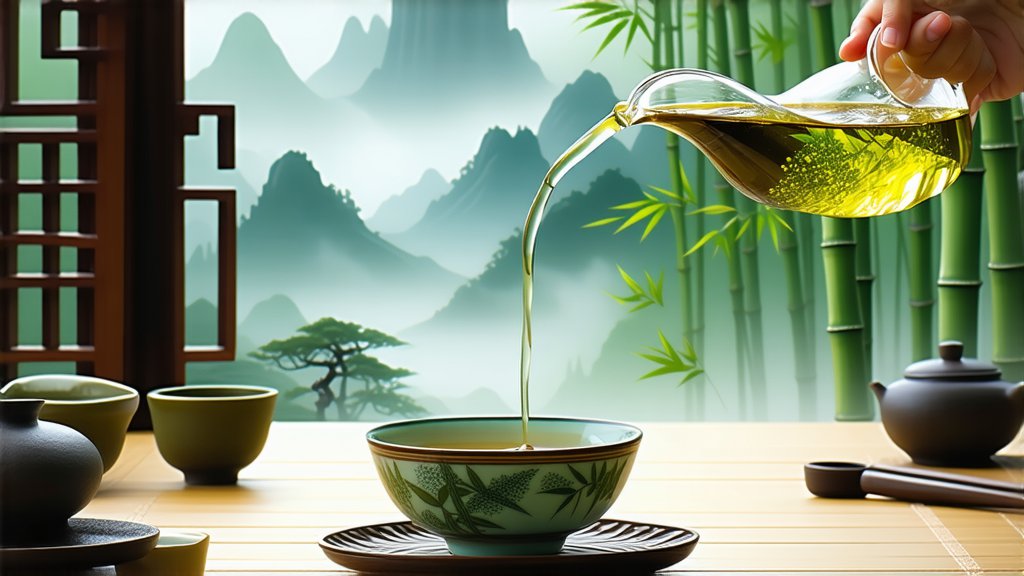
In the vast and diverse landscape of Chinese tea culture, few varieties capture the imagination and palate quite like Longjing tea, also known as West Lake Dragon Well tea. This exquisite green tea, hailing from the picturesque region around West Lake (Xihu) in Hangzhou, Zhejiang Province, is not just a beverage but a cultural icon that embodies the essence of Chinese tea artistry and philosophy. As we embark on this journey through the verdant world of Longjing, prepare to be enchanted by its rich history, unique characteristics, intricate production process, and the delicate art of its appreciation.
Historical Roots and Legends
Longjing tea's origins are steeped in both history and legend. Its cultivation dates back over 1,200 years, with records indicating its presence during the Tang Dynasty. However, it gained prominence during the Qing Dynasty when Emperor Kangxi was said to have visited a local temple near West Lake and was served this exceptional tea. So impressed was he by its quality that he ordered additional plants to be cultivated in the area, thus sealing Longjing's fate as a royal favorite and a symbol of imperial favor.
Varieties and Classification
Longjing tea comes in several grades, each distinguished by its appearance, flavor profile, and the elevation at which it is grown. The highest grade, often referred to as "Xiong Mei" or "Lion Peak," is harvested from tea gardens located at higher altitudes surrounding West Lake. These leaves are prized for their flat, sword-like shape, vibrant green color, and a taste that is both sweet and umami, with a lingering aftertaste reminiscent of chestnuts or fresh vegetables. Lower grades, while still of excellent quality, may exhibit slight variations in these characteristics due to differences in growing conditions and processing techniques.
The Art of Longjing Production
The magic of Longjing lies not only in its terroir but also in the meticulous craftsmanship involved in its production. Harvested typically between late March and early April, the young tea shoots are carefully handpicked, selecting only the tenderest buds and leaves. The freshly picked leaves undergo a series of steps that transform them into the iconic pan-fried green tea we know today:
-
Fixation: The first step involves quickly heating the leaves in a large wok or pan to halt oxidation, preserving their green color and fresh aroma. This process also helps to soften the leaves for shaping.
-
Shaping: Master tea makers skillfully toss and press the leaves against the hot surface of the wok, molding them into their characteristic flat shape. This technique requires great dexterity and experience to ensure even heating and proper formation without breaking the leaves.
-
Drying: After shaping, the leaves are further dried to remove excess moisture, enhancing their shelf life and concentrating their flavors. This can be done either by continued pan-firing or through baking methods.
-
Sorting and Grading: Finally, the dried tea is sorted according to size, shape, and quality, ensuring that only the finest leaves make it into premium grades of Longjing.
The Ritual of Tasting
To truly appreciate Longjing tea, one must engage in the ritualistic practice of Gongfu tea brewing, which emphasizes precision, mindfulness, and an appreciation for the subtleties of the tea. Here's a guide to experiencing Longjing at its best:
-
Preparation: Use a Yixing clay teapot or a clear glass vessel to observe the unfurling leaves. Rinse the teapot with boiling water to warm it up.
-
Dosage: For every 150ml of water, use approximately 3-5 grams of Longjing leaves. Adjust based on personal preference for stronger or milder flavors.
-
Water Temperature: Use water heated to around 80-85°C (175-185°F). Boiling water can scorch the delicate leaves, leading to a bitter taste.
-
Steeping: Steep the leaves for about 1-2 minutes for the first infusion. Subsequent infusions can be longer, as Longjing can typically be brewed 3-4 times without losing flavor.
-
Observation: Watch as the leaves dance and unfurl, releasing their fragrant aroma and golden-green liquor. Notice the clarity and color of the brewed tea.
-
Sip and Savor: Take small sips, allowing the tea to coat your palate fully. Pay attention to the initial sweetness, mid-palate complexity, and the long-lasting finish. Try to discern the nuances of flavors, such as vegetal notes, toasted grains or hints of fruitiness.
-
Reflection: Take a moment to appreciate the calming effects of the tea, reflecting on its journey from ancient China to your cup and the hands that crafted it.
In conclusion, Longjing tea is more than just a drink; it is a testament to China's rich tea heritage, a celebration of nature's bounty, and a reflection of the harmony between man and environment. Whether you are a seasoned tea connoisseur or a curious newcomer, its allure is undeniable. So, brew yourself a pot, sit back, and let the enchanting world of Longjing transport you to the tranquil shores of West Lake, where every sip tells a story of centuries past.